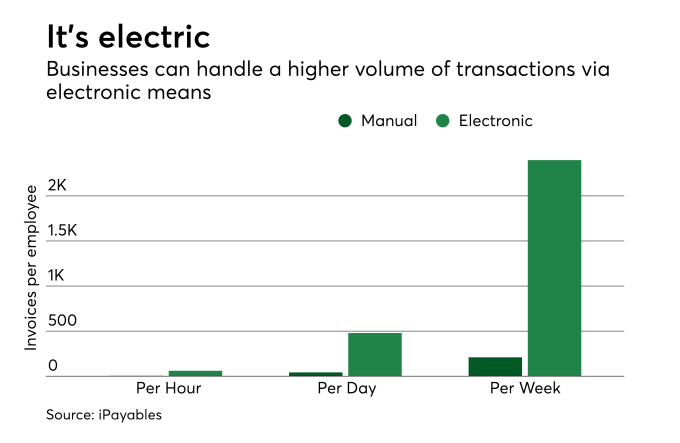Businesses should heed consumers’ comfort with virtual cards

Driven by new technology and the consumerization of enterprise as people demand a more comfortable experience, growth in business use of virtual cards has been strong in recent years. Yet they still account for a relatively small share of the commercial cards market.
Apple is doing a great job of introducing the concept of virtual cards to the masses with its Apple Pay solution, which allows users to make purchases at participating merchants on their iPhone and Apple Watch. Certainly, as awareness and education around virtual cards have increased and their use has become more commonplace, the demand from younger employees, in particular, has become apparent. After all, if the technology is there and in wide personal use, why wouldn’t businesses adopt virtual cards?

For virtual cards to really take off in a commercial context, businesses need to put the right processes in place to make it easy for employees to get up and running with them. In order for this to happen, it is all about implementing the right procedures to drive fast uptake in a business context. Again, this will involve working with technology that employees are familiar with.
Fortunately, the only device employees would need for this is a mobile phone onto which they can download an app — making the process not only simple but fast and cost-effective. For example, staff can use the app to request a virtual card, with this request being sent quickly to their line manager for approval and allowing them to instantly sign off on it. The process then triggers the card to be automatically issued to the employee’s mobile app, effectively bringing the power of virtual cards into their hands quickly and easily. This immediacy means new users don’t need to wait around to be issued a physical card and can instantly make the transactions they need to fulfill their role.
While that makes sense for businesses, to drive further usage, organizations also need to extend the range of applications for which virtual cards can be used: moving beyond simple expense management into the procurement process, for example. The business case for this is strong as organizations are likely to experience a number of benefits. After all, it is faster, easier and cheaper to establish a procurement process underpinned by virtual cards than traditional paper-based processes.
Once virtual cards have become an established part of business processes, their effects will be felt across the entire organization with the impacts of implementing virtual cards able to be broken down into three areas: the reconciliation, automation and security of processes.
Virtual cards also provide businesses with the tools to empower employees and remove many of the paper aspects of their roles, while also giving them trust, control of spend and a greater degree of transparency. Similarly, with a larger percentage of the workforce now classified as “millennials,” businesses are changing, and virtual cards allow businesses to keep up with the demands of a changing workforce, offering the tools and technology the younger generations have come to expect.
For the majority of businesses, moving away from traditional forms of payments to using virtual cards not only makes processes such as expense management and the procurement process faster, while cutting costs and providing more immediacy and transparency, but it also has several benefits for employees more generally. With managers able to approve employees spending via an app on their phone, it empowers employees, shows them they are a trusted member of the team and gives them confidence that their employer is forward-thinking, investing in the latest technology to give them the tools they need to perform.
B-to-B payments ISO and agent Mobile payments Payment processing

